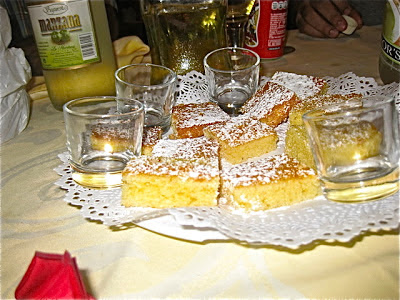When in Spain, eat what Spanish eat, no?
The fun part of travelling around the world is to taste the
local cuisine. During my last visit to Bangkok, my family and I headed straight
from the airport to a restaurant to take our first bite of fried rice. Even the
guests who visit me in Mumbai go crazy on batatawada, pani-puri, ragda pattis.
I don’t blame them, they crave for the local food and they would go wild if
there was no fear of bad stomach.
There are many countries where we have to develop a taste for
that particular cuisine. When I went to Spain for the first time, I found the
food very bland. There was no spice or chilies in the food. Many times I would
carry a chilies sauce in my purse when I went out to eat. But gradually I
developed a taste for it and now when I visit Spain, I do try some local
cuisine.
On my last visit to Spain, I stopped by Barcelona for four days.
My hosts took me out for lunch to try a typical Spanish cuisine. Twenty years
ago, Barcelona was the host for Olympic games. An Olympic village with
apartments and restaurants were developed at the seaside. Here was the venue
for rows of restaurants serving all kinds of cuisine. The place was well
lighted and there was much activity till late evening.
It was raining and the weather was chilly. As soon as we entered
the restaurant, we were surrounded with the warmth and the happy atmosphere.
Tourist and business people occupied the large round tables that were evenly
spaced out. Transparent plastic curtains enclosed the area to keep out the
rain. On the backside, behind the transparent curtain were the bar and the
kitchen.
The service was quick and the waiter was alert. The olives and
freshly baked bread coated with garlic and tomato appeared on the tables before
even we could decide on the menu. The order would be the mixture of vegetarian
and non-vegetarian.
To start with, I opted for Sangria, a fruit cocktail mixed with red wine with a bit of bubbly soda. Unfortunately, during the meal, with many more variety of food appearing at our table, I accidently dropped off my glass of Sangria and was not able to enjoy this after few sips.
But the rest of the meal was quite enjoyable.
I stretched my fork to pick up Jamón Ibérico de Bellota. This
ham, (cured for more than 36 months, I was told,) is from free-range pigs that
roam oak forests (called dehesas), and eat only acorns during this last period.
The exercise and diet have a significant impact on the flavor of the meat.
Salty and crisp, it tasted best went combined with freshly baked toast.
Gambas a la ajillo, the shrimps stir-fried with garlic in olive
oil were tender and sweetish in taste.
Calamars a la Romania, the ring shaped squids, coated with egg flour batter and deep-fried. These were crispy and tender.
I had never tasted
Chiperones, which is actually small deep fried fishes, “have this, you will
like the crispy, crunchy taste” said my BIL, but we were served baby octopus
instead, I liked that as well.
When the Paella arrived I was taken by surprise. Now I had never
known the existence of black rice. This is the specialty of Valencia and the
black color is from black squid ink that is used during preparation. The rice
was salty, crisp and well grilled filled with assorted seafood and chicken.
For the vegetarians, there was goat cheese salad, vegetarian
paella and vegetable pinchitos, (the grilled chunks of cucumber, white gourd,
brinjal and tomatoes).

Spanish meal is never complete till it ends with liquor and dessert. I was too full to order anything. However the liquor is good for digestion and the tiny glasses were too attractive to give a miss. We finished it with the piece of cake coated with cinnamon and powder sugar.






